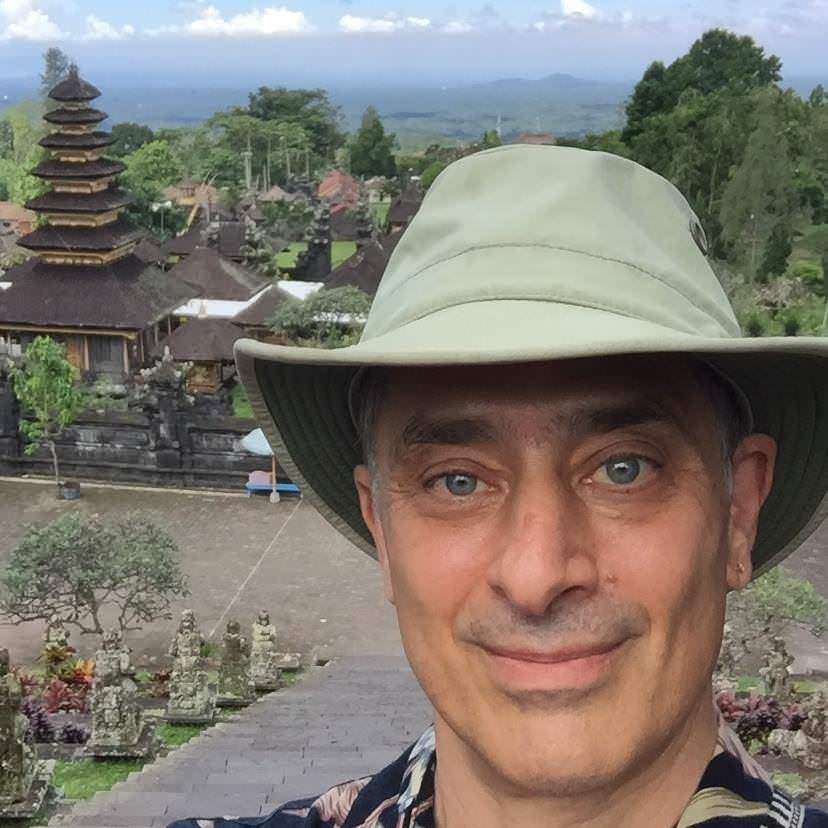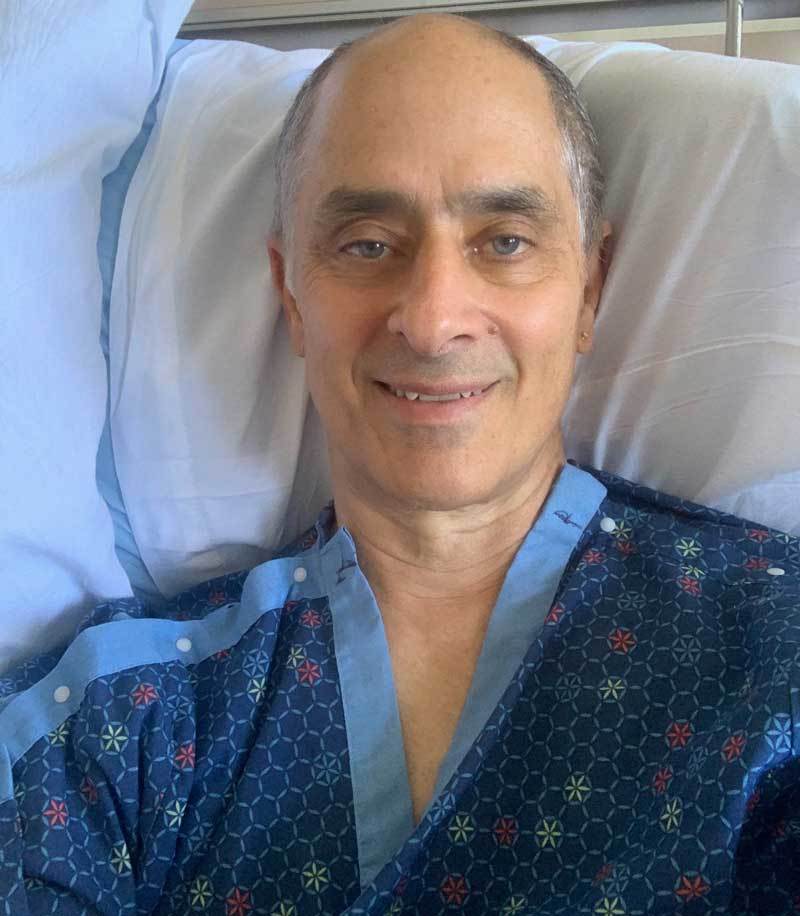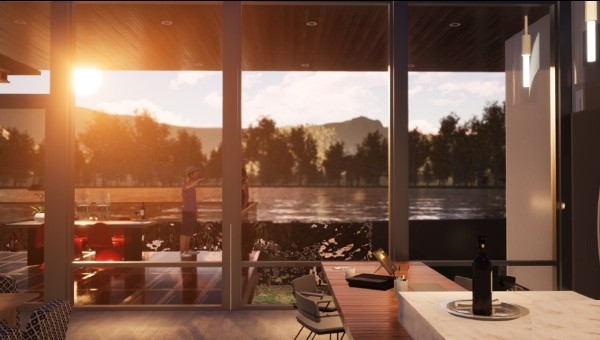Author Archives: Eric Bobrow
Author Archives: Eric Bobrow
Back in May I had a heart attack (see earlier post for details).
After release from the hospital, I took my time ramping up my work schedule, being sure to get plenty of rest, eating healthy, and walking a lot every day.
It's been 4 months now since I got out of the hospital, and I'm feeling good, and have been exercising EVERY day (which is amazing and feels great).
At 67 years old, I feel like I have a new lease on life. (A friend suggested I "get that in writing"...)

I have been very busy with my Architect Marketing Institute business development coaching program with my amazing partner Richard Petrie and our team, however I haven't put much energy into my Archicad work. It's time to adjust the balance, and share my gifts and passion about Archicad again with users around the world.
I've resumed teaching my Archicad Best Practices 2020 training course, continue to offer weekly Archicad Coaching Program small group webinars, as well as my monthly ARCHICAD USER webinar series.
MasterTemplate 25 will finally be released - I apologize for the delay in getting this out the door. Look for an announcement soon...
I'm back!
TLDR: I had a heart attack and survived.
I'm OK now. (Videos below)
It was late on Saturday night May 15.
I felt short of breath, and generally pretty lousy.
I debated whether to tell my wife Le'ema - I didn't want to worry her.
It had started the day before, when we did a brisk walk with our dog, and I felt like I couldn't get enough air and my chest felt funny.
Similar experiences came and went that Friday and Saturday, then got worse Saturday night.

After the heart attack: in my stylish hospital gown
It was 1:30 am, and I felt bad in an odd sort of way, even lying down.
I knew that I needed to get this checked out by a doctor.
My pulse was racing at 93 beats per minute - my heart was struggling even as I rested quietly. My blood pressure was 161 over 95; very very high.
I finally told Le'ema what was going on. She asked me how I felt. I said I felt bad, that something was really wrong. She asked for more details, but there was nothing else I could really say to describe it.
I asked her to drive me to the emergency room at the local hospital at about 2 am.
We raced the 15 minutes to Marin General Hospital as I steadied my nerves, attempting to breathe slowly and fully.
My wife remained calm, although inside she was a wreck.
She is a "shero" (female hero) for getting me there safely!
We walked up to the emergency room door and she announced to the nurse "My husband is having a heart attack."
It was very scary, although they treated us efficiently and quickly got me to an examination room. The EKG came back "abnormal" and Dr. Gin (who had rushed over from her nearby home) told me in a steady voice "you have serious heart disease, and we're taking you to the Cath Lab right away."
I had never been told that I had heart disease, this was a surprise.
The last time I had a complete physical checkup (4 years ago), I had been told my cholesterol was high and that I should start taking statin drugs to control it. I asked if I could reduce my cholesterol through diet instead, and was told "maybe, you can try"...so I took that as a go-ahead to make some small changes (such as eating oatmeal from time to time).
Big mistake. I never went back for a follow-up.
Here I am 4 years later, at the emergency room with a heart attack.
Stupid me.
My wife was allowed in to see me before they took me to the Cath Lab. She was delighted to see the all female medical team, and as they wheeled me away Dr. Gin talked with her about my condition. Le'ema says Dr. Gin is a real "shero" for saving my life.
The Cath Lab is a short name for the Cardiac Catherization Laboratory, where they perform angioplasty procedures to open up cardiac arteries for people in distress like me. They placed my right arm in a sterile covering (a super-long glove) and proceeded to insert a catheter tube into an artery on my wrist, and snake it up to my heart.
It's incredible. I'm lying there awake (they only lightly sedate the patient) and listening to the medical team as they review the images onscreen showing my heart beating. The angiograms are somewhat like X-Rays, imaged using the CAT Scan machine that I'm lying on, using a radioactive contrast dye that they drip into my blood vessels.
After the procedure, I was shown the rather beautiful, intricate traceries of the blood vessels. Apparently my main artery, the one they call The Widowmaker, was 95% blocked. This severely limited the blood flow and caused the sensation of being short of breath - my heart was not getting enough oxygen, even as I breathed in as much air as I could.
I lay there for more than 2 hours as they planned and executed the procedure. There were complications and they had to figure out the best way to handle the most important blockages first.
Angioplasty opens up the arteries (which have been clogged with sticky plaque from the cholesterol and blood cells that get stuck on it) using a tiny balloon that pushes apart the artery walls. Then the balloon is removed and a stent (a tiny metal framework almost like a woven basket) is inserted and expanded. This keeps the walls separated so they don't collapse back down.
This process has only been in use for the past 25 or 30 years. Prior to that, a blockage like I had would have meant open heart surgery and multiple bypasses (extra blood vessels removed from another part of the body and placed in the heart to facilitate normal blood flow).
I am SO grateful that the doctors were able to handle this almost like magic - threading a tube through my body, with just a tiny insertion into my wrist!
After 2 hours they decided to give my body some rest; they had put in 3 stents, taking care of the emergency. They told me that I would get 2 more the next day, after my body rested and would be able to tolerate another procedure.
My wife had been in a waiting room nearby, all by herself. She was beside herself, not knowing whether I would survive. After 2 hours they came out and told her it had been a success, and she found her way up to my hospital room. She went home at 5 or 6 in the morning, and tried to sleep.
A 4 minute message from my hospital bed
I settled into my new routine in the hospital - nurses coming at all odd hours, checking my "vitals" - blood pressure, heart rate and oxygenation of my blood; drawing blood; running additional EKG tests, and god knows what else.
A sweet young nurse came in later that morning to do a bedside echocardiogram. Just like the sonograms that are used to image the fetus in a pregnant woman, a metal device was rubbed slowly over my chest and shot sound waves into my body. Onscreen my heart revealed its structure and movement. It was bizarre and wonderful to see my beating heart onscreen.
She looked from all different angles, then paused in one area. One part of my heart wall was not moving as it normally should; it is in shock from the heart attack. It may recover full function - or not - they can't tell yet.
She looks deeper, and injects an albumen-based (non-radioactive) contrast dye through my intravenous feed.
This allows her to study an area that shows another issue - a clot, or thrombis.
This is somewhat serious - clots can grow or detach and move to another area such as the lungs or brain, and can be fatal.
They immediately put me on "blood thinners" to reduce that risk to a minimum. I'll be on these meds for a few months. The hope is that the clot will gradually dissolve as my heart returns to more healthy function.
I ask the cardiologists who come by my bedside whether I'll be OK. They say I will need to be careful, but they are hopeful that with the right meds, and better diet and moderate exercise, I'll be OK.
The next day, my brother tells me that he has 2 stents, put in 22 years ago. My cousin, age 90, tells me a similar story. I'm filled with hope, and so grateful that at age 67 I have been given another chance.
I love my life and my work - however I've let my work rule my day to day life to an unhealthy extent. Staying up until 1 or 2 am catching up on emails and answering support questions. Sleeping 6 or 7 hours then forcing myself to get back to work with just a coffee as my breakfast. No time for exercise, other than walking the dog.
Since I got out of the hospital one week ago, I've been walking several times a day, enjoying the fresh air on my own, or with our dog, or with my wife and the dog. I've been taking naps, sitting in the sun in our glorious, peaceful backyard.
I've started back to work, however I'm giving myself some slack...and stopping my nightly work shift well before midnight...
Of course, the real challenge will be how to prioritize health and relaxation while still getting the essential work done.
I've received so much support from family, friends, business associates, clients and "followers" (people who enjoy my free Archicad tutorials or other resources I share). Hundreds of messages of encouragement, and many stories of overcoming similar challenges. These boost my spirits.
I know I make a difference in this world, and that people care about me. I have much to live for, and am so very grateful to have some more time to enjoy and to share my gifts.
If you're reading this, please know that you are important to me. I wish you the best in your life, and that you may have abundant health and joy.
Don't be stupid like I was.
If you get medical advice, don't ignore it. None of us is a superman or superwoman. I have been healthy all my adult life, hardly ever getting sick. That didn't keep me from getting heart disease. "I shoulda known better..."
In humility, and with deep gratitude,
Eric
Learn how to total up areas of exterior walls, doors & windows based on orientation for energy analysis - creating a custom Orientation property, defining a custom schedule, and setting up a Graphic Override to check if everything is tagged consistently and completely.
Do this yourself using the techniques I demonstrate in this 24 minute video, or get this along with hundreds of other clever, efficient, productive ideas integrated into MasterTemplate, the most robust, popular independent Archicad template.
MasterTemplate, now in its 14th year of continuous development, embeds my celebrated Best Practices methods directly into the Archicad file structure, helping you take advantage of the full power and speed of the program.
I want to thank Archicad user Richard Morrison for showing me this idea, and encouraging me to adapt and include it into MasterTemplate. Great ideas should be shared!
The August 2020 ARCHICAD USER webinar will feature two veteran users with different backgrounds and ways of approaching things.
They will each show us how they work, and share tips and methods to save time and deliver better projects.
One of them has used Archicad even longer than I have - Duane Valencia is one of the "original masters" of Archicad!
For complete information, and to sign up, please visit the ARCHICAD USER website.
If you miss the live session, the recording will be posted on my YouTube channel as well as on the ARCHICAD USER site.

Twinmotion image of ARCHICAD model by 2e Architects
I'm pleased to announce (and co-produce) a new Twinmotion training course VR for Architects, which will be taught by my old friend Peter Twohy of 2e Architects in Timonium Maryland USA, who was featured this week in the April ARCHICAD USER webinar.
Twinmotion is a powerful rendering and animation tool that is currently available at no charge for ARCHICAD users.
It allows you to create STUNNING images that are for more realistic and attention-grabbing than what is possible in the 3D window or even Cinerender.
Many users have asked me "can you teach us how to use Twinmotion" and I've had to say "I'm not an expert, I don't have much experience yet with this tool."
Well, I have found the perfect person to teach this class - someone I like and respect on many levels.
I’ve known Peter for a long time, originally as a member of my ARCHICAD Best Practices Course, then later as a charter member of my Internet Marketing for Architects course and the Architect Marketing Institute.
Peter’s practice has gone from “taking anything I can get” - from local porch remodels on up - to whole house remodels and new luxury home design throughout the eastern U.S.
Why?
Because he’s become an expert ARCHICAD user AND an expert architect marketer.
I've just posted a recording of our April ARCHICAD USER webinar, in which Peter gave us all a tour of several projects, highlighting his efficient ARCHICAD design and documentation process as well as his groundbreaking usage of TwinMotion visualization and full Virtual Reality immersion (which he says “makes clients’ jaws drop”).
Peter was assisted in this presentation by his right-hand man, Chris Dvorak, who takes the design models Peter creates and develops them for working drawings as well as detailed visualization.
The presentation was an eye-opening show revealing how far you can take your own ARCHICAD models - when you use these fantastic tools to their fullest potential.
Check out the new VR for Architects website for info on Peter's upcoming free webinar as well as the new Twinmotion course. You'll also see some rather impressive images and animations that Peter produces "almost effortlessly" from his ARCHICAD model.
Peter says that setting things up for Twinmotion visualization adds about 5% more effort to his project hours, while giving him a powerful advantage in winning projects. He actually saves time in client meetings - "they get it" and can make decisions more quickly.
The free webinar on May 4th (Peter jokes "may the force be with you") is titled:
"VR for Architects - Learn How to Make Your Clients' Jaws Drop!"
The new course launches May 11th - visit the website to sign up with discounted intro pricing (scroll down or click the link in the navigation bar).
If you have any questions, I'm happy to answer them - post a comment here, or email info (at) vrforarchitects.com.